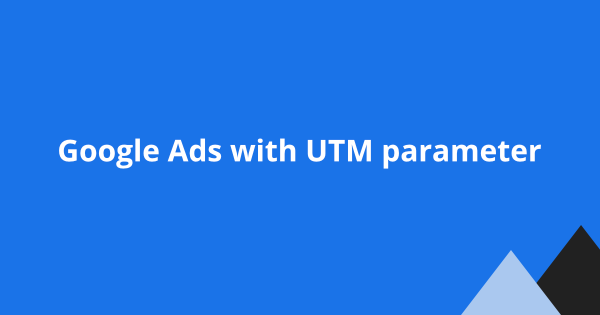
A click identifier is a piece of generated text that is automatically added to the Ad URLs by the advertising platforms like Google Ads and Facebook Ads for the purpose of identifying the Ad campaign and measuring the individual performance of an Ad.
To help you visualize, when Ads are served to the search engine results, each Ad URL will come attached with its own unique click identifier value.
For example, Google Ads uses the gclid parameter for their click identifier.
https://www.yoursite.com/landing-page/?gclid=Cj0KCQjwuvrBBhDcARIsAKRrkjfr_YMKQVvWzAmKKYxS5slZtf7Os3OKWR9IHUawNY2nQcohFhkpo5EaApSbEALw_wcBOnce the visitor has clicked on the Ad, the value of the click identifier is also being passed along to the website via the URL. The conversion tracking script which is installed on the website can then capture the click identifier and report it back to the Ad platform once a conversion has occurred (e.g. form submission or purchase) . This will then allow website owners to know which particular Ad brought in the conversion.
Here’s a breakdown of the most widely used click identifiers by Ad platform:
| Click Identifier | Ad Platform |
| gclid | Google Ads |
| dclid | Google Ads (display & video) |
| fbclid | Facebook / Meta Ads |
| msclkid | Microsoft / Bing Ads |
| li_fat_id | Linkedin Ads |
| ttclid | TikTok Ads |
| twclid | Twitter Ads |
| ScCid | Snapchat Ads |
| epik | Pinterest Ads |
| rdt_cid | Reddit Ads |
| vmcid | Yahoo Ads |
| yclid ymclid yqrid yzclid click_id | Yandex Ads |
Click Identifiers for Apple iOS 14.5+
In 2021, Apple introduced App Tracking Transparency (ATT) in iOS 14.5 where an app would need request user consent before the app can share the user data across other apps and websites for the purpose of advertising.
If the user opts out, apps are not allowed to specifically identify and track the user when they interact with an Ad. Hence Ad platforms cannot attach a unique click identifier to the Ad URL which later can be tied back to a specific individual.
Therefore to comply with Apple’s policies, Ad platforms like Google have introduced special click identifiers where they are not unique to a particular user but still works for the purpose of conversion attribution. However, Ad platforms can no longer accurately measure certain Ad performance signals.
| Click Identifier | Ad Platform |
| gbraid | Google Ads (web-to-app measurement) |
| wbraid | Google Ads (app-to-web measurement) |
Additional reading regarding impact of App Tracking Transparency
- Google: Learn about gbraid and wbraid
- Google: Updates to iOS 14 campaign measurement
- Facebook: Reach people using iOS 14.5 or later with Meta Ads
- Facebook: Tips to Manage Your iOS 14+ Campaign in Facebook Ads Manager
Useful Click Identifier Tips
- Check that you have enabled the Auto-tagging feature in your Ad account so that click identifiers are included in your Ad URLs.
- Run an audit to make sure that the click identifiers are actually being passed to your website. Sometimes mis-configuration on your server can cause URL redirection to stripped off the click identifiers.
- Web server usually serves un-cache version of the website whenever there is a URL parameter. Therefore whitelist the click identifiers in your page caching rules so that your website uses the cache version of the page even with click identifiers.
- Privacy-based browsers like Brave has the tech to prevent click identifier tracking. This will affect the measurements data from the conversion tracking script. You will have to depend on server-side tracking to set first-party cookie or just UTM parameters for attribution.
- You can use Google Ads Offline Conversion to import the click identifiers for better coverage.
- Install a click identifier tracking solution like our AFL UTM Tracker WordPress plugin to instantly capture the Click Identifiers and UTM parameter of upon your visitors submitting your lead generation forms.

